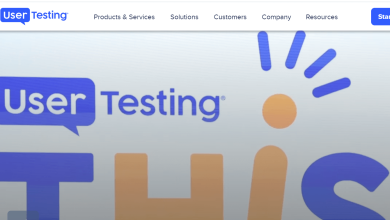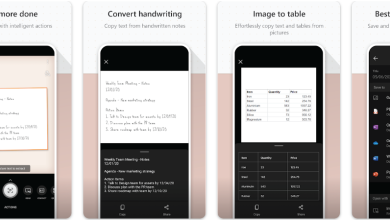Exploring The Future Of Internet Television (IPTV)

When conventional TV programming is broadcast from the station, the antenna picks the radio waves and converts them into electrical signals. The TV decodes the electrical signals into sound and picture. A similar transmission mechanism is used by satellite TV, but the signals are sent directly from space. For cable TV, the signals are sent directly to the viewer’s TV set without having the signals transition into radio waves. The recent wide adoption of the internet has led to the development of internet television. The internet provides an efficient postal system capable of delivering astronomical packets of data. That makes the internet a perfect platform for downloading web pages, sending emails, watching TV, and making telephone calls. But first, what is IPTV and how does it work?
With an Internet Protocol TV service, viewers can watch television programming and other video content using TCP/IP (Transmission Control Protocol/Internet Protocol). Other protocols that may be used include Hypertext Transfer Protocol and Real-Time Streaming Protocol. Internet Protocol Television viewers can watch TV via the set-top box, computer, and smartphone. The internet link can be sourced from the broadband internet connection, Wi-Fi router, and fiber optic. The set-top box must have an adapter capable of decoding incoming TV signals to relay internet programs. Leading IPTV providers include large network operators and small niche companies that only provide certain types of content.
What Is IPTV And How Does It Work?
As the viewership of traditional terrestrial TV dwindles due to an array of factors, including global trends and technological advances, more people are tuning in to Internet Protocol Television (IPTV). Internet Protocol TV (IPTV) makes it possible for users to watch their favorite TV shows and other programming via internet connectivity. That is unlike the customary TV that is interlinked to fiber-optic cable, antenna, and satellite dish. The streamed programs can be played or downloaded instantaneously. The flexibility of IPTV is another huge plus as it is 100% digital, easy to set and use, and offers a variety of services.
With its subscription-based model and superior user experience, viewers can watch Live TV broadcasts, Video on Demand (VOD) content, and much more. Users also get to enjoy a commercial-free television viewing experience and Smooth Simultaneous Streaming of Multiple Programs. The multiple-use capability means users can stream TV on multiple devices, such as PCs, televisions, and mobile phones. A lot has also been said about IPTV’s legality. It is essential to recognize that most countries do not have express laws prohibiting content streaming. However, the streaming service providers need to obtain the rights to broadcast the content on their channels the same way subscribers pay for services.
IPTV Services
The operation of the IPTV is grounded on a complex networking architecture that involves transcoding the traditional signals into signals attuned to the IP. IPTV offers a host of interactive services, including Live Television, Near Video on Demand, Video on Demand, and Time-shifted TV. Live Television is streamed directly from the source. However, pre-recorded programs require storage to enable programming to be streamed on-demand. VOD video streaming comes alive every time a service is requested. Users subscribed to the service get to watch videos wherever they want since there is no time limit. The most significant limitation of using the VOD service is bandwidth constraint.
However, an investment in fiber-optic broadband with speeds of between 1- and 100 MBPS can go a long way to ensure clients subscribed to IPTV enjoy quality services. For Time-Shifted TV subscribers, an opportunity to watch a streamed show at a later time is provided. Some TVs are loaded with a rewind option to enhance access. When a channel is replaced, the provider’s server transmits a new stream. The Time-Shifted TV service providers often deliver IPTV content through dedicated or managed networks. A dedicated network gives operators greater control over the video traffic and critical elements like uptime and reliability. A major difference between Time-Shifted TV and VOD is the limited shelf-life in the sharable content. Unlike VOD, you cannot go back several years to watch the shows you missed.
The Future Of IPTV Technology
Experts believe the gains made by IPTV will significantly impact cable TV viewership. The evidence is glaring as the television viewing habits change and more people subscribe to Over-The-Top streaming services offered by leading internet-based streaming services like Hulu and Netflix. That development has become evident as more homes get connected to broadband and fiber-optic broadband. Studies show the demand for IPTV globally is rising at the rate of more than 30% annually. A 2020 research by Mordor Intelligence placed the IPTV markets at $72 billion. The market is expected to hover near the $200 billion mark by 2026.
Although Europe and Asia are the leading growth markets, North America has a firm grip on the Average Revenue Per User (ARPU) matrices. In terms of TV viewing habits, busy schedules have greatly curtailed the amount of time people spend in front of the Television. That is providing sufficient room for alternative TV’s like IPTV to thrive. Some of the challenges IPTV will face in the future include guaranteeing Quality of Service (QoS), packet loss, and delays in packet arrival or latency. The providers must be cognizant of these issues to ensure a high-quality TV stream. In the meantime, leading IPTV streaming service providers are investing in new IT infrastructure to boost IPTV interactivity, control, and convenience.
Several traditional TV channel distributors have also entered into an agreement with IPTV providers to tap into the growing audience. Those offering a combination of deliverables such as OTT, smart home, and Video Calls are likely to lead the charge. The path may be easier for companies in the telecommunication sector as they have the infrastructure to deliver television and internet services. The development of Hybrid broadcast broadband (HbbTV) that works in synthesis with satellite, cable, and internet broadcast is expected to give IPTV a considerable boost. The combination creates a solid platform to increase web application choices relayed through a set-top box and other customer premises equipment.




